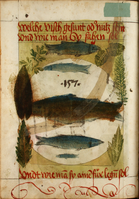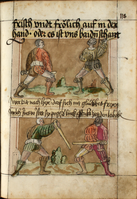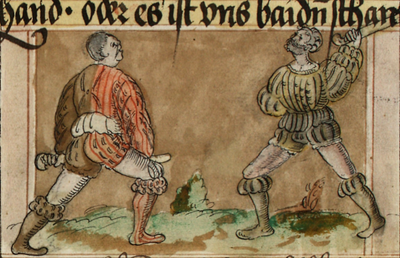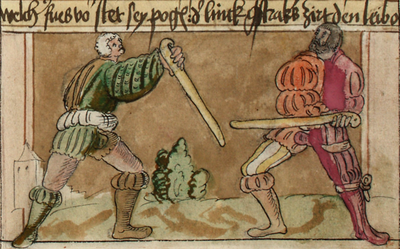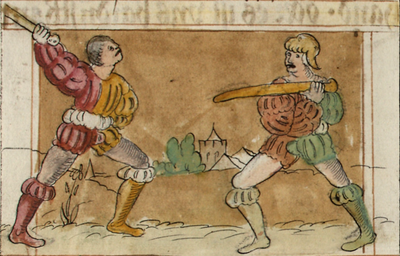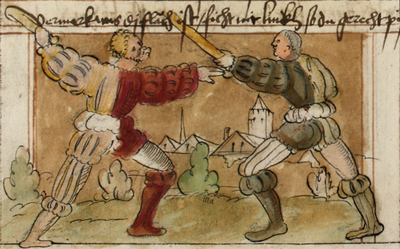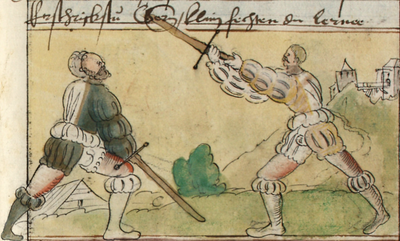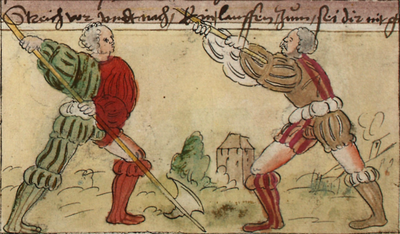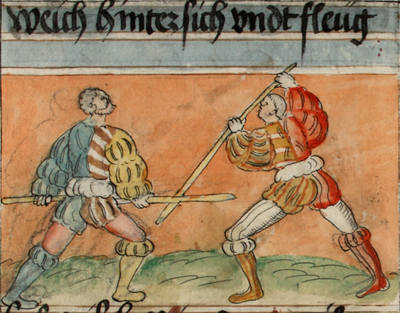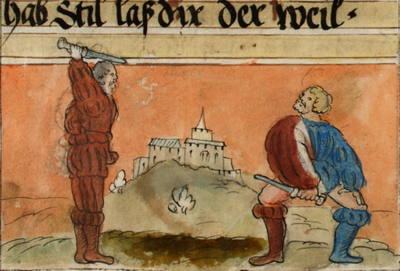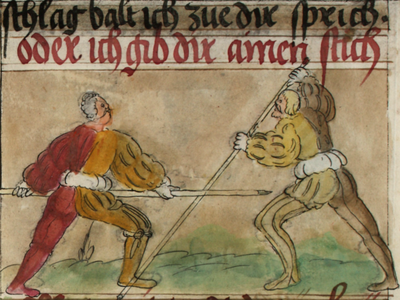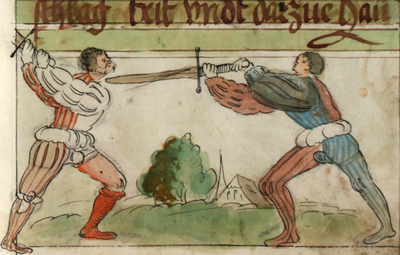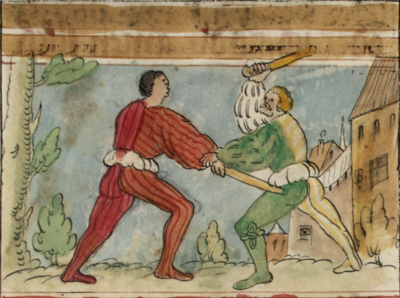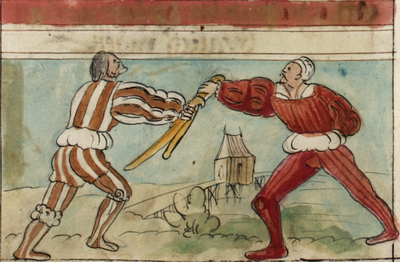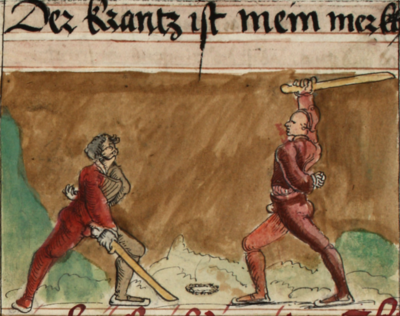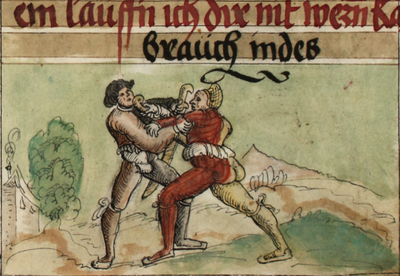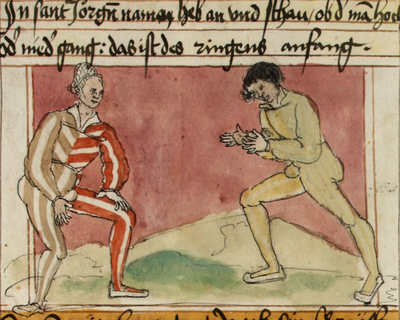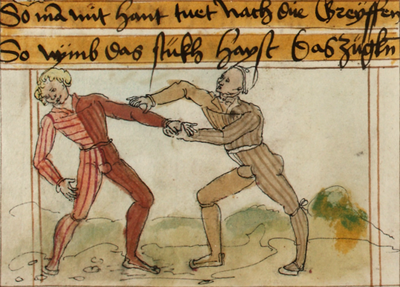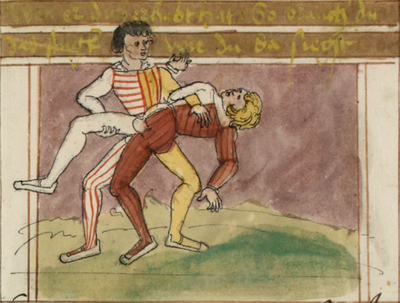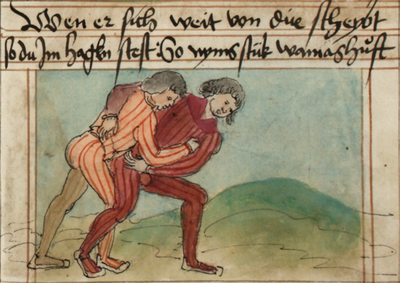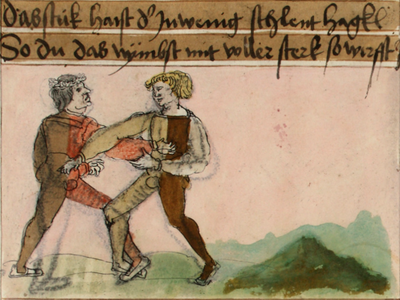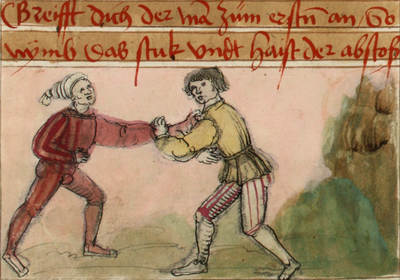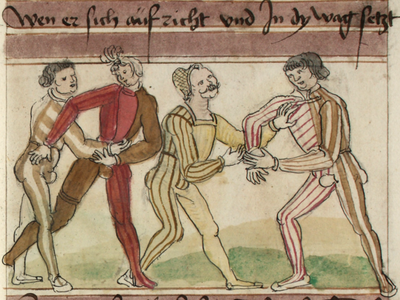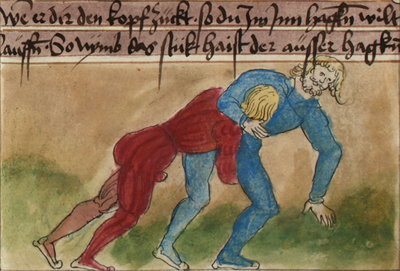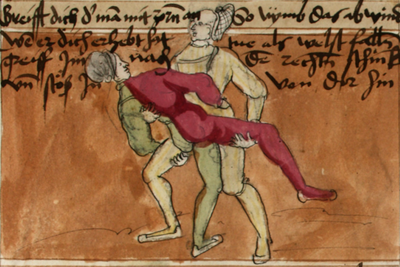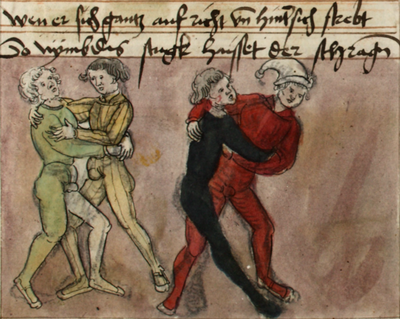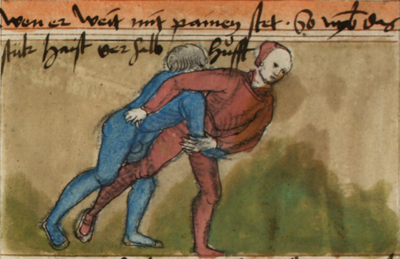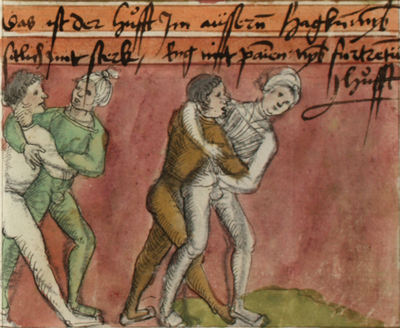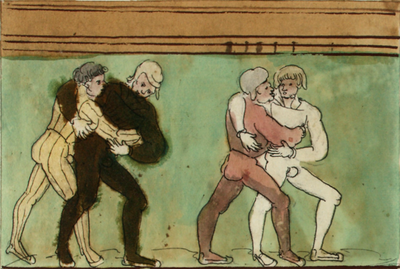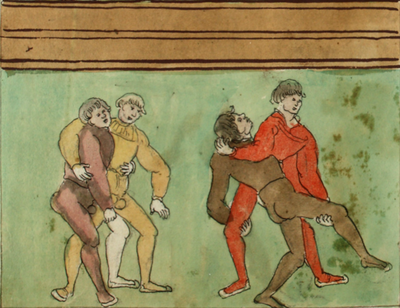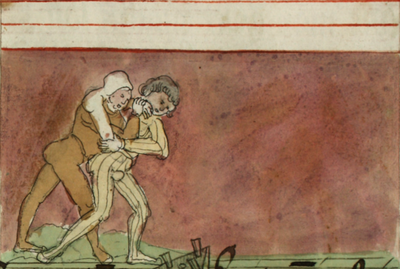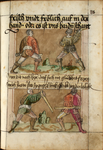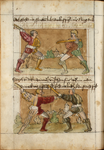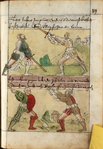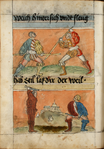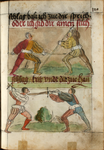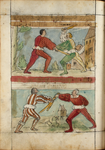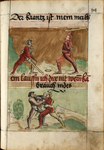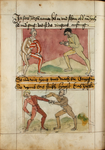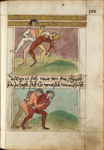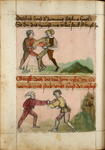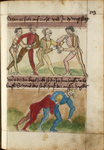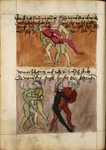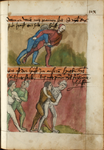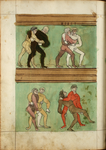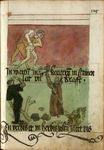|
|
| (6 intermediate revisions by the same user not shown) |
| Line 12: |
Line 12: |
| | | Wierschin's catalog= — | | | Wierschin's catalog= — |
| | | Hils' catalog = — | | | Hils' catalog = — |
| − | | Beck catalog = — | + | | Beck catalog = [http://kdih.badw.de/datenbank/handschrift/49a/5/1 49a.5.1] {{#set:BC=49a.5.1}} |
| − | | Also known as = | + | | Also known as = MS 1463 |
| | | Type = [[type::Commonplace book]] | | | Type = [[type::Commonplace book]] |
| | | Date = [[year::1524]] | | | Date = [[year::1524]] |
| Line 39: |
Line 39: |
| | | Previously kept = | | | Previously kept = |
| | | Discovered = [[Jan Dovica]] | | | Discovered = [[Jan Dovica]] |
| − | | Website = [http://gateway-bayern.de/BV040710618 Library catalog entry] | + | | Website = {{plainlist |
| − | | Images = [http://bvbm1.bib-bvb.de/webclient/DeliveryManager?custom_att_2{{=}}simple_viewer&pid=5281832 Digital scans] (1500x2000) | + | | [https://www.opac.fau.de/TouchPoint/start.do?Query{{=}}+1035%3D%22BV040710618%22+IN+%5B2%5D&View{{=}}uer&Language{{=}}en Library catalog entry] |
| | + | | [http://gateway-bayern.de/BV040710618 Gateway Bayern] |
| | + | }} |
| | + | | Images = [http://digital.bib-bvb.de/webclient/DeliveryManager?pid{{=}}5281832&custom_att_2{{=}}simple_viewer Digital scans] |
| | | below = | | | below = |
| | }} | | }} |
| Line 104: |
Line 107: |
| | | | |
| | |- | | |- |
| − | | class="noline" | [[File:MS B.200 119r-b.png|400px|center]]
| + | | [[File:MS B.200 119r-b.png|400px|center]] |
| − | | class="noline" | <p>Fight close at the body; <br/>don’t avoid [giving] light hits.</p>
| + | | <p>Fight close at the body; <br/>don’t avoid [giving] light hits.</p> |
| | | | |
| | <p>Strike ‘before’ and ‘after’; <br/>don’t be too quick to run in close.</p> | | <p>Strike ‘before’ and ‘after’; <br/>don’t be too quick to run in close.</p> |
| − | | class="noline" | {{section|page:MS B.200 119r.png|3|lbl=-}}
| + | | {{section|page:MS B.200 119r.png|3|lbl=-}} |
| | | | |
| | {{section|page:MS B.200 119r.png|4|lbl=-}} | | {{section|page:MS B.200 119r.png|4|lbl=-}} |
| Line 163: |
Line 166: |
| | | | |
| | |- | | |- |
| − | | class="noline" | [[File:MS B.200 121r-b.png|400px|center]]
| + | | [[File:MS B.200 121r-b.png|400px|center]] |
| − | | class="noline" | <p>{{red|I cannot prevent you from closing in;}} use ''Indes''.</p>
| + | | <p>{{red|I cannot prevent you from closing in;}} use ''Indes''.</p> |
| − | | class="noline" | {{section|page:MS B.200 121r.png|2|lbl=-}}
| + | | {{section|page:MS B.200 121r.png|2|lbl=-}} |
| | | | |
| | |} | | |} |
| Line 253: |
Line 256: |
| | | | |
| | |- | | |- |
| − | | class="noline" | [[File:MS B.200 125r-a.png|400px|center]]
| + | | [[File:MS B.200 125r-a.png|400px|center]] |
| − | | class="noline" | <p>[No text]</p>
| + | | <p>[No text]</p> |
| − | | class="noline" | {{section|page:MS B.200 125r.png|1|lbl=125r|blk=1}}
| + | | {{section|page:MS B.200 125r.png|1|lbl=125r|blk=1}} |
| | | | |
| | |} | | |} |
| Line 263: |
Line 266: |
| | | | |
| | == Gallery == | | == Gallery == |
| − | | + | {{-}} |
| − | Images hosted by the [[Universitätsbibliothek Erlangen-Nürnberg]].{{-}}
| + | {{image|MS B.200 118r.png|118r}} |
| − | | + | {{image|MS B.200 118v.png|118v}} |
| − | {{image|MS B.200 118r.png|118r|link=http://digital.bib-bvb.de/webclient/DeliveryManager?custom_att_2{{=}}simple_viewer&pid{{=}}5281832&childpid{{=}}5282515}} | + | {{image|MS B.200 119r.png|119r}} |
| − | {{image|MS B.200 118v.png|118v|link=http://digital.bib-bvb.de/webclient/DeliveryManager?custom_att_2{{=}}simple_viewer&pid{{=}}5281832&childpid{{=}}5282516}} | + | {{image|MS B.200 119v.png|119v}} |
| − | {{image|MS B.200 119r.png|119r|link=http://digital.bib-bvb.de/webclient/DeliveryManager?custom_att_2{{=}}simple_viewer&pid{{=}}5281832&childpid{{=}}5282517}} | + | {{image|MS B.200 120r.png|120r}} |
| − | {{image|MS B.200 119v.png|119v|link=http://digital.bib-bvb.de/webclient/DeliveryManager?custom_att_2{{=}}simple_viewer&pid{{=}}5281832&childpid{{=}}5282518}} | + | {{image|MS B.200 120v.png|120v}} |
| − | {{image|MS B.200 120r.png|120r|link=http://digital.bib-bvb.de/webclient/DeliveryManager?custom_att_2{{=}}simple_viewer&pid{{=}}5281832&childpid{{=}}5282519}} | + | {{image|MS B.200 121r.png|121r}} |
| − | {{image|MS B.200 120v.png|120v|link=http://digital.bib-bvb.de/webclient/DeliveryManager?custom_att_2{{=}}simple_viewer&pid{{=}}5281832&childpid{{=}}5282520}} | + | {{image|MS B.200 121v.png|121v}} |
| − | {{image|MS B.200 121r.png|121r|link=http://digital.bib-bvb.de/webclient/DeliveryManager?custom_att_2{{=}}simple_viewer&pid{{=}}5281832&childpid{{=}}5282521}} | + | {{image|MS B.200 122r.png|122r}} |
| − | {{image|MS B.200 121v.png|121v|link=http://digital.bib-bvb.de/webclient/DeliveryManager?custom_att_2{{=}}simple_viewer&pid{{=}}5281832&childpid{{=}}5282522}} | + | {{image|MS B.200 122v.png|122v}} |
| − | {{image|MS B.200 122r.png|122r|link=http://digital.bib-bvb.de/webclient/DeliveryManager?custom_att_2{{=}}simple_viewer&pid{{=}}5281832&childpid{{=}}5282523}} | + | {{image|MS B.200 123r.png|123r}} |
| − | {{image|MS B.200 122v.png|122v|link=http://digital.bib-bvb.de/webclient/DeliveryManager?custom_att_2{{=}}simple_viewer&pid{{=}}5281832&childpid{{=}}5282524}} | + | {{image|MS B.200 123v.png|123v}} |
| − | {{image|MS B.200 123r.png|123r|link=http://digital.bib-bvb.de/webclient/DeliveryManager?custom_att_2{{=}}simple_viewer&pid{{=}}5281832&childpid{{=}}5282525}} | + | {{image|MS B.200 124r.png|124r}} |
| − | {{image|MS B.200 123v.png|123v|link=http://digital.bib-bvb.de/webclient/DeliveryManager?custom_att_2{{=}}simple_viewer&pid{{=}}5281832&childpid{{=}}5282526}} | + | {{image|MS B.200 124v.png|124v}} |
| − | {{image|MS B.200 124r.png|124r|link=http://digital.bib-bvb.de/webclient/DeliveryManager?custom_att_2{{=}}simple_viewer&pid{{=}}5281832&childpid{{=}}5282527}} | + | {{image|MS B.200 125r.png|125r}} |
| − | {{image|MS B.200 124v.png|124v|link=http://digital.bib-bvb.de/webclient/DeliveryManager?custom_att_2{{=}}simple_viewer&pid{{=}}5281832&childpid{{=}}5282528}} | |
| − | {{image|MS B.200 125r.png|125r|link=http://digital.bib-bvb.de/webclient/DeliveryManager?custom_att_2{{=}}simple_viewer&pid{{=}}5281832&childpid{{=}}5282529}} | |
| | | | |
| | == Additional Resources == | | == Additional Resources == |
| Liber Quodlibetarius |
|---|
MS B.200, Universitätsbibliothek Erlangen
Erlangen, Germany |
|
|
|
| Also known as |
MS 1463 |
|---|
| Type |
Commonplace book |
|---|
| Date |
1524 |
|---|
| Place of origin |
Nuremberg |
|---|
| Language(s) |
|
|---|
| Author(s) |
Unknown |
|---|
| Scribe(s) |
Benedictus Rughalm |
|---|
| Illustrator(s) |
Unknown |
|---|
| Material |
Paper, in a half-leather cover |
|---|
| Size |
204 folia (210 mm × 290 mm) |
|---|
| Format |
Double-sided; one or two illustrations per
side, with captions |
|---|
| Identified |
Jan Dovica |
|---|
| External data |
|
|---|
| Treatise scans |
Digital scans |
|---|
The MS B.200 is a German commonplace book created in or around 1524; it seems to have been scribed by one Benedictus Rughalm, though he was probably not the author of any of it.[1] The original currently rests in the holdings of the Universitätsbibliothek Erlangen-Nürnberg in Erlangen, Germany. The manuscript is a compilation of a variety of disparate texts, and includes a brief series of fencing and wrestling pieces based on the only two printed German books on fighting at the time, the anonymous Landshuter Ringerbuch ("Landshut Wrestling Manual") and Andre Paurenfeyndt's Ergrundung Ritterlicher Kunst der Fechterey ("Foundation of the Chivalric Art of Swordplay").
This manuscript is very similar to BJ Rkp. Przyb. 35/64, and was probably created in the same workshop.
Provenance
Contents
| 118r - 119r
|
Illustrations
|
Draft Translation 
by Matt Galas
|
Transcription [edit]
by Dierk Hagedorn
|
|
|
Lively and spirited, [with weapon] in hand;
or it will shame the both of us.
He who steps after cutting,
will not be happy with his luck.
|
[118r] frisch vndt frolich auf in der hand.
oder es ist vns baiden schant
Wer trit nach heyen:
darf sich nit gluckhes freyen
|
|
|
Whichever leg is forward, should be bent;
the left extended; hold the body upright.
|
Welcher fues von stet sey pogen:
der linck gstraks zirt den leib oben
|
|
|
Fence on high with your body stretched;
make your attacks with force from a distance.
|
[118v] hoch gfochten mit gstraktem leib,
Gwaltig possen aus dem leng treib
|
|
|
Strike and step with one another;
and set the feet against each other.
Note what the flat is;
don’t fight from the left if you are right[-handed].
|
Straich vnd trit miteinander,
vnd setz den fües wider ein ander
Vermerk was dj flӑch ist,
ficht nit linkh so du gerecht pist
|
|
|
Step close in the bind;
otherwise you will be wounded.
If you scare easily,
don’t learn how to fence.
|
[119r] Trit Nahent Inn pünt,
Anders oder du wierst verwunt
Erschrickstu Gern,
klain fechten du lernee
|
|
|
Fight close at the body;
don’t avoid [giving] light hits.
Strike ‘before’ and ‘after’;
don’t be too quick to run in close.
|
ficht nahent peym leib,
die zekrüer nit vermeidt
Streich vor vndt nach,
Einlauffen, zum, sei dir nit gach
|
|
| 119v - 121r
|
Illustrations
|
Draft Translation 
by Matt Galas
|
Transcription [edit]
by Dierk Hagedorn
|
|
|
Give way backwards and retreat.
|
[119v] weich hintersich vndt fleüg
|
|
|
Hold still; wait a while.
|
hab Stil laß dir der weil.
|
|
|
Strike quickly, I tell you; or I will give you a thrust.
|
[120r] schlag balt ich zue dir sprich.
oder ich gib dir ainen stich
|
|
|
Strike, step—and cut together with [him].
|
schlag trit vndt darzüe hau
|
|
|
[No text]
|
|
|
|
[No text]
|
[No text]
|
|
|
Take note, that wreath is mine!
|
[121r] Der krantz ist mein merkh
|
|
|
I cannot prevent you from closing in; use Indes.
|
ein laüffen ich dir nit weren kan brauch indes
|
|
| 121v - 125r
|
Illustrations
|
Draft Translation 
by Matt Galas
|
Transcription [edit]
by Dierk Hagedorn
|
|
|
In Saint George’s name, begin; and watch to see whether your opponent goes high or low: That is the beginning [lesson] of wrestling.
|
[121v] In sant Jŏrgen namen heb an vnd schau, ob der man hoch oder nieder gang: das ist des ringens anfang.
|
|
|
If he grabs at you with his hand, then use the technique that is called Zucken (pulling).
|
So man mit hant tuet Nach dir Greyffen
So nymb das stükh hayst das zügken
|
|
|
If he has lifted you up, then use the technique which you see here.
|
[122r] Wen er dich erhebt hat: So brauch du das stugk wie du da siegst
|
|
|
If he shoves you away from him when you are in the Haken (hook), then grab a piece of his jacket near the hip.
|
Wen er sich weit von dir scheybt so du Im hagkn stest: So nyms stük wamashuft[?]
|
|
|
This technique is called the Inwendig Schlent Hagkl (inside [?] hook). If you use that at full force, you will throw him.
|
[122v] Das stuck haist der Inwendig schlent hagkl So du das nymbst mit voller sterk so wirfst In
|
|
|
If your opponent grabs you first, then use this technique, which is called the Abstoss (shove-away).
|
Greifft dich der man züm ersten an, So nymb das stuk vndt haist der abstoß
|
|
|
If he stands upright and positions himself in the Balance.
|
[123r] Wen er sich aufricht vnd In dy wag setzt
|
|
|
If he pulls your head [under his arm] when you try to run in at him with the Hacken (hook), then use the technique called the Aüsser Hacken (outer hook).
|
wen er dir den kopf zückt. so du Im Inn hagken wilt lauffen. So nymb das stük haist der aüsser hagken
|
|
|
If your opponent grabs hold of you with fury, then use the Abwinden (turning aside). If he has lifted you up, act as if you are going to fall, [but instead] grasp hold of his right thigh and shove him away from you.
|
[123v] Greifft dich der man mit zoren an So nymb das abwinden Wen er dich erhebt hat tue als welst fallen greiff Im nach dem rechten schinkel vnd stöß In von dir hin
|
|
|
If he stands completely upright and strains backwards, then use the technique called the Schragen.
|
Wen er sich gantz aufricht vnd hinter sich strebt So nymb das stugk haisset der schragen
|
|
|
If he stands with his legs wide apart, then use the technique called the Halb Hufft (half hip).
|
[124r] Wen er weit mit painen stet • So nymb das stük haist der halb hufft
|
|
|
This is the hip in the Aüsser Hacken (outer hook). Use this with force. Wrestle with the legs and step forwards [to the?] hip.
|
das ist der hufft Im aüsseren hagken nymb solich mit sterk / Rng mit painen: nymb furtretüt ? hufft
|
|
|
[No text]
|
|
|
|
[No text]
|
[No text]
|
|
|
[No text]
|
|
|
Gallery
Additional Resources
The following is a list of publications containing scans, transcriptions, and translations relevant to this article, as well as published peer-reviewed research.
References
- ↑ Internally dated on 86v, and both dated and signed on 164r.
Copyright and License Summary
For further information, including transcription and translation notes, see the discussion page.

